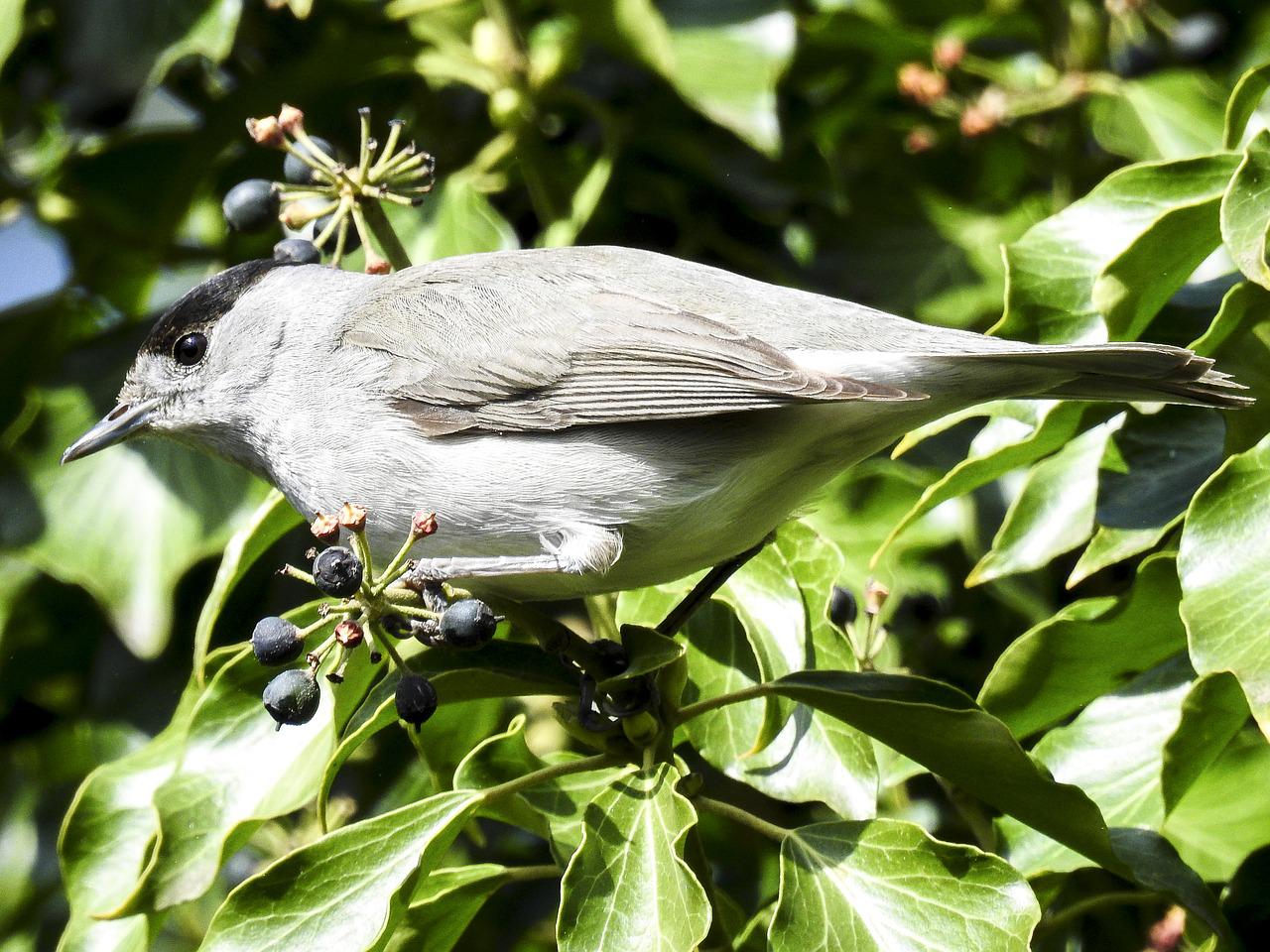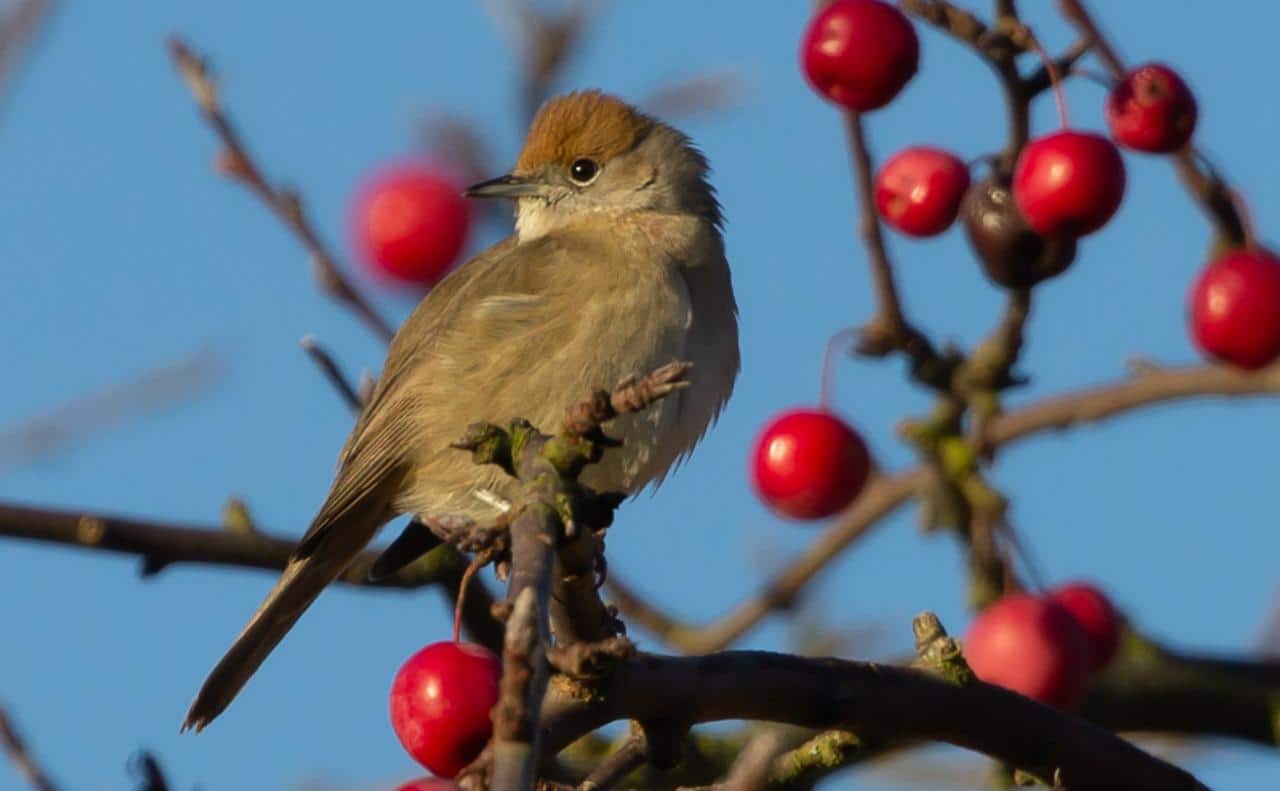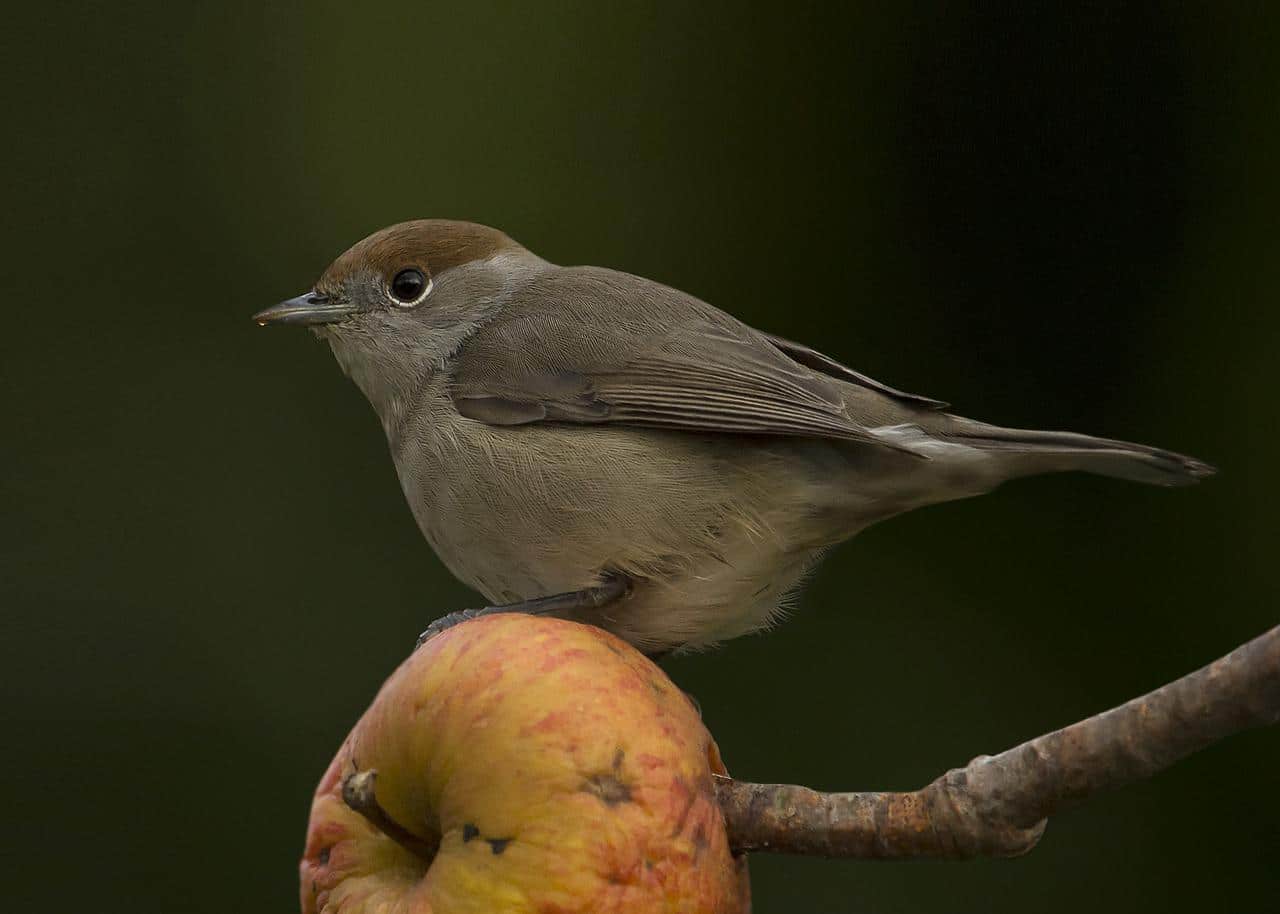
The blackcap is a small bird with abundant plumage in sober and discreet colors. Mainly in its plumage, stronger gray colors are distinguished in the upper part and lighter in the lower part. It is a common warbler, widespread in different territories such as Africa, Asia and Europe. The capirotada warbler belongs to the Sylvidae or Silvidos family, hence it is also called Sylvia atricapilla.
Both males and females have a characteristic cap located on the top of their head and thanks to it the type of sex can be differentiated, in the case of males it has a blacker color, while in the case of females it tends to be darker. to be a more reddish brown shade. The size of this species of bird is between 13 and 15 centimeters, they are small, which makes them almost imperceptible in nature.
Thanks to its pleasant and varied song, the Blackcap is classified by many as a new “nightingale” appearing in books, movies and even music. Despite extensive hunting in certain countries and the dangers of predators, This species has been known to protect itself and has even spread over the years.
Blackcap or Sylvia atricapilla

It is the species of warbler, most common in the area of Central Europe. Within this species and this location, there is a classification, that is, those that live in the northern and eastern areas of Europe are considered long-distance birds, while those in the western and central areas are short- and medium-distance birds.
This species of bird can also be found in areas of Africa and AsiaIn addition, one of the most frequent places where this type of bird can be seen is in the Canary Islands, where they form their habitat thanks to the spaces where there is abundant vegetation and food.
The typical song of blackcaps begins very softly and increases in volume suddenly. It is characterized by having a short and striking song. It is common that it can be confused with the song of other species.
Where they are found: habitat and distribution

This beautiful species is distributed, as we have previously mentioned, mainly in areas of Europe, but it can also be found in Africa and Asia. One of the most frequent places within the European continent, are the Canary Islands, in Spain. In this area, not only its beaches and good weather stand out, but also its areas of vegetation and food for this species and others.
The breeding area of this species in the continental zone is between July 14 and 30. The warblers located in the Mediterranean and Atlantic areas, hibernate within the nesting area, while bird populations living elsewhere are migratory.
The blackcap is a migratory bird, that is, the birds found in the north of the breeding area travel south, while those that breed in the Mediterranean do so at a shorter distance.
The captive breeding of birds from the Canary Islands with migratory warblers from Germany resulted in a offspring with controlled behavior at the time of migration, in addition to showing that the need for this migration is genetically controlled.
Main habitat of the blackcap
The main habitat of this species of birds is in mature deciduous forests. Where they are with abundant vegetation, and dense thickets under the trees. Other habitats where this type of bird can be observed are in parks, gardens, hedges, but as long as the vegetation meets certain requirements.
Some examples where this type of birds reproduce are oak groves, ash trees and other similar trees, also in coniferous forests, mixed forests, fruit orchards, olive groves, etc. They look for shady areas, they avoid very dry areas with little vegetation. Next to streams or rivers, where there is more humidity, it is common to see them.
In the event that in the towns or cities a greater quantity of food is offered, either for climatic reasons or others, blackcaps resort to them, going unnoticed by the human eye for his great distrust, but at the same time for his agility and speed.
Blackcap Characteristics

It measures between 13 and 15 centimeters in length, as we indicated at the beginning of the publication, and around 20 and 23 centimeters in wingspan. As for their weight, they can weigh between 14 or 20 grams.
pen and color
The plumage of the blackcap, it has a discreet appearance due to its colors helping it to go unnoticed for all those, who have not managed to learn to differentiate it from other species, being able to confuse it with a house sparrow.
In the case of males, the upper part of its plumage, on the head, neck and chest, has an olive gray color. or grayish brown. The rump, the upper part of the tail, has a light gray tone, the belly area is usually white. And both the tail and the wings of a dark gray color.
As for the females, they differ from the males by the tone of the crown, it is the upper part of the bird's heads., which is commonly called a cap. In the case of males, it is a shiny black color and in the case of females, it is a more brownish tone. As in the other case, they share the colors of the upper part of their plumage. As for the chest and sides, in females it is paler in color.
The youngest specimens have features in common with the adult females.s as for those reddish brown tones that are located on the top of the head.
warbler song

This bird differs from the rest by being tireless and it demonstrates this with its constant song. and during all phases of the year. This occurs in both male and female specimens. The song of the blackcap is pleasant and varied, accompanied by a series of short whistles.
The song of the male specimens goes from more to less, ending in a higher pitch. It can play bursts of up to 30 seconds long. These bursts can be repeated for two or three minutes.
It can be confused with another type of species, like the garden warbler, but that of the blackcap is much shorter. Both songs are quiet sounds and very similar in terms of the song they play.
Another aspect to emphasize is that the blackcap can sometimes imitate the song of other species of birds like the common nightingale.
Flight and nest of Blackcaps
The flight of this species of bird is characterized by being agile, fast and active, since it is a restless and busy bird.. When they seek to move from one tree to another, they do so by shaking, when it comes to short distances. If the flight distance is greater, the flight is more undulating.
In times of winter, the couples stay together when flying, while, in times of summer, the female leaves accompanied by other younger specimens.. When startled by any noise, movement, or warning, they fly off in different directions. She is not used to descending to the ground, when she does she moves by jumping.
As for the nests of warblers, they are of poor construction, that is, they are light and built with little material.. It is the males, who choose the ideal place where the nest is going to be placed, marking it with the help of dry herbs, the female is in charge of its construction. They take around four or five days to build, using materials such as dried grass, moss, roots, hair, etc. Generally, they are usually hidden inside bushes or other types of undergrowth.
What does a blackcap eat

The main food during the breeding process are small insects. Later, as the summer months arrive, they switch to fruit, berries or wild fruits.
Some of the bugs that are the main part of their diet are aphids, flies, beetles, caterpillars or worms.. Small snails are also captured by these birds, eating them whole without having to be divided, that is, they eat both the animal and its shell.
The young are fed by small insects, cherries, figs or other wild fruits characteristic of the season. During the winter months, fruits such as apples or pears are their main source of food. since they are crops that are very within their reach. They squeeze the seeds out of the fruits, before eating the pulp.
Within their diet, you can also find the fruits of the ivy, berries of different plants, elderberry, hawthorn, blackberry, yew, the fruit of the holly, etc.
Major predators and diseases

One of the main predators of blackcaps are sparrow hawks, but It can be prey to all kinds of animals, from reptiles, small mammals such as cats and other species of birds. Even human beings, we can become one of the most dangerous predators by hunting this species and keeping them in captivity.
As for the diseases that this type of bird faces, are mainly caused by certain parasites that cause an infectious disease which can seriously affect this species. Infections by the malaria parasite may occur, becoming harmful to this species due to its high transmission capacity.
Another case of diseases is due to parasitic worms that warblers carry inside them on certain occasions, ending up with their young. The external parasites that can suffer are lice or mites that are located in their plumage.
As we have seen, the blackcap is a small bird with abundant and colored plumage that helps it go unnoticed. It is, distributed by different territories forming small communities of this species.